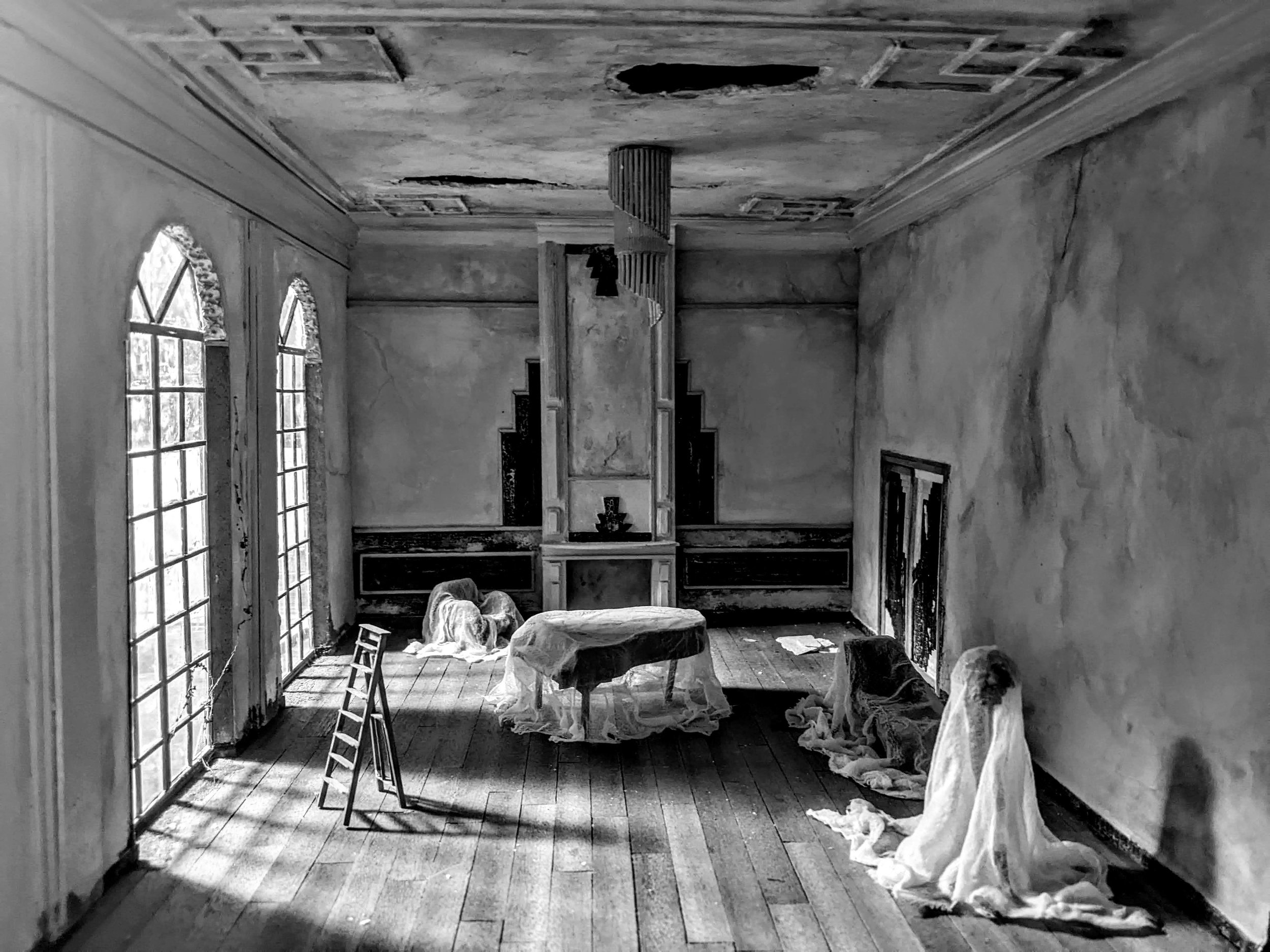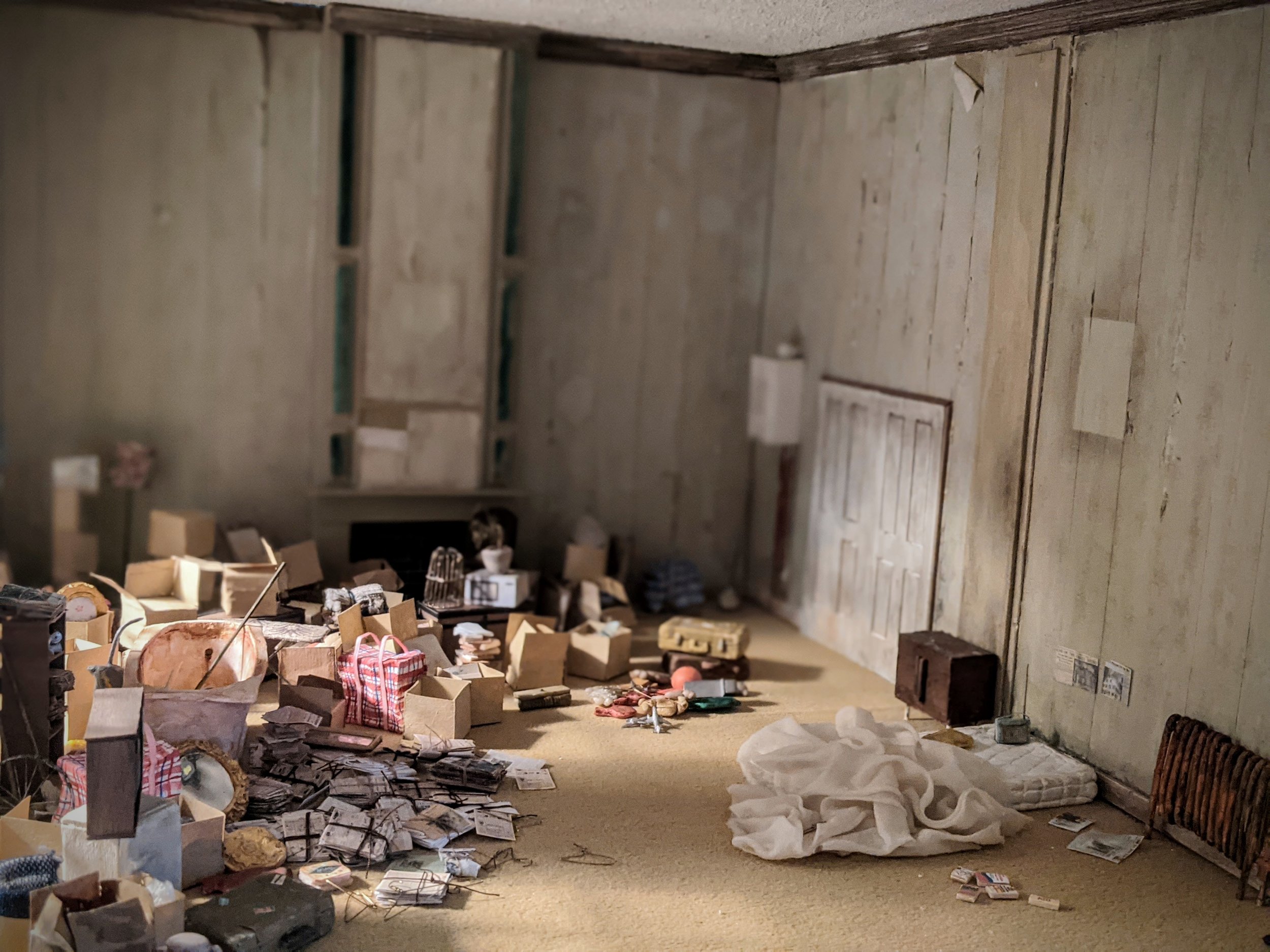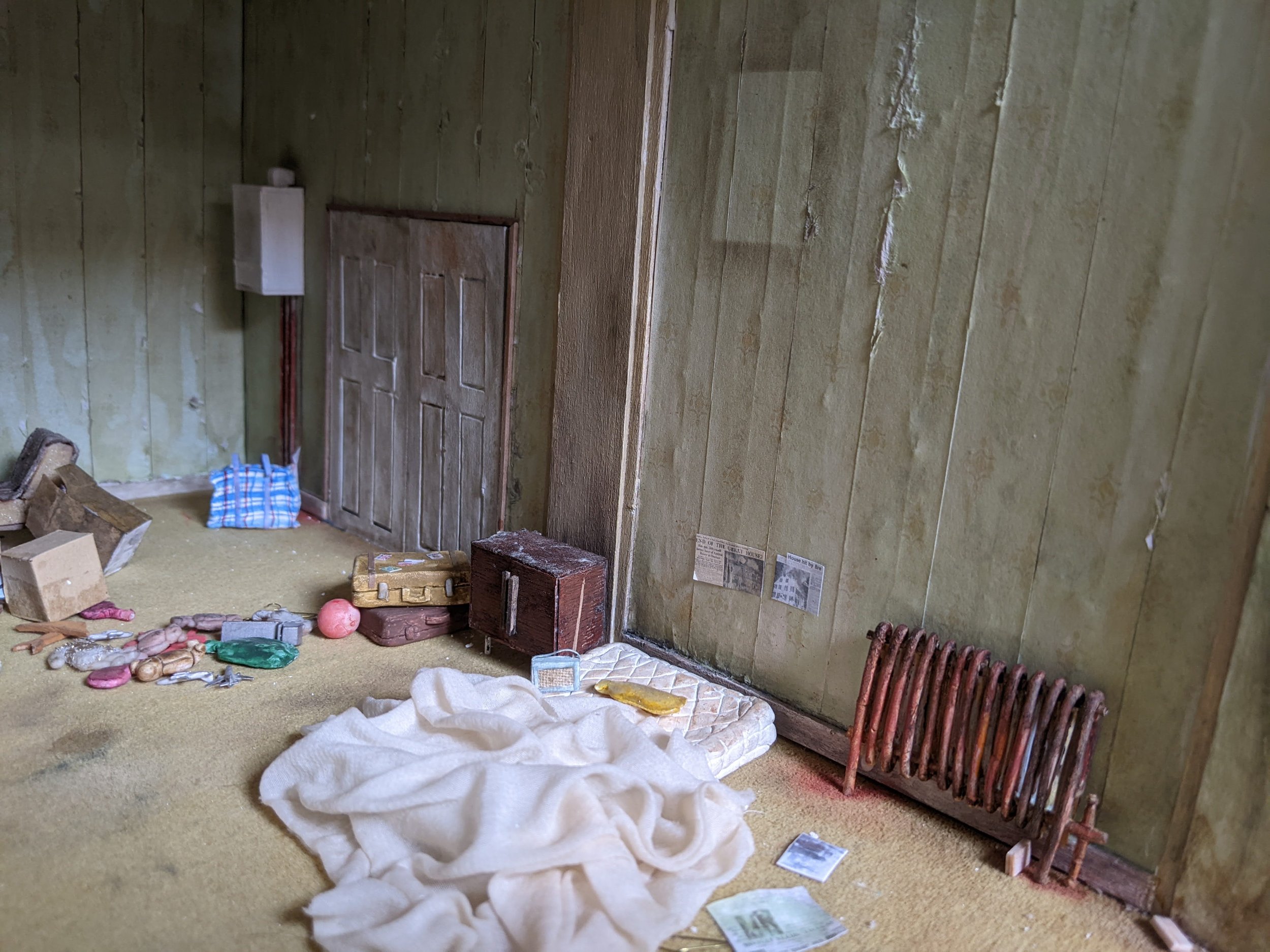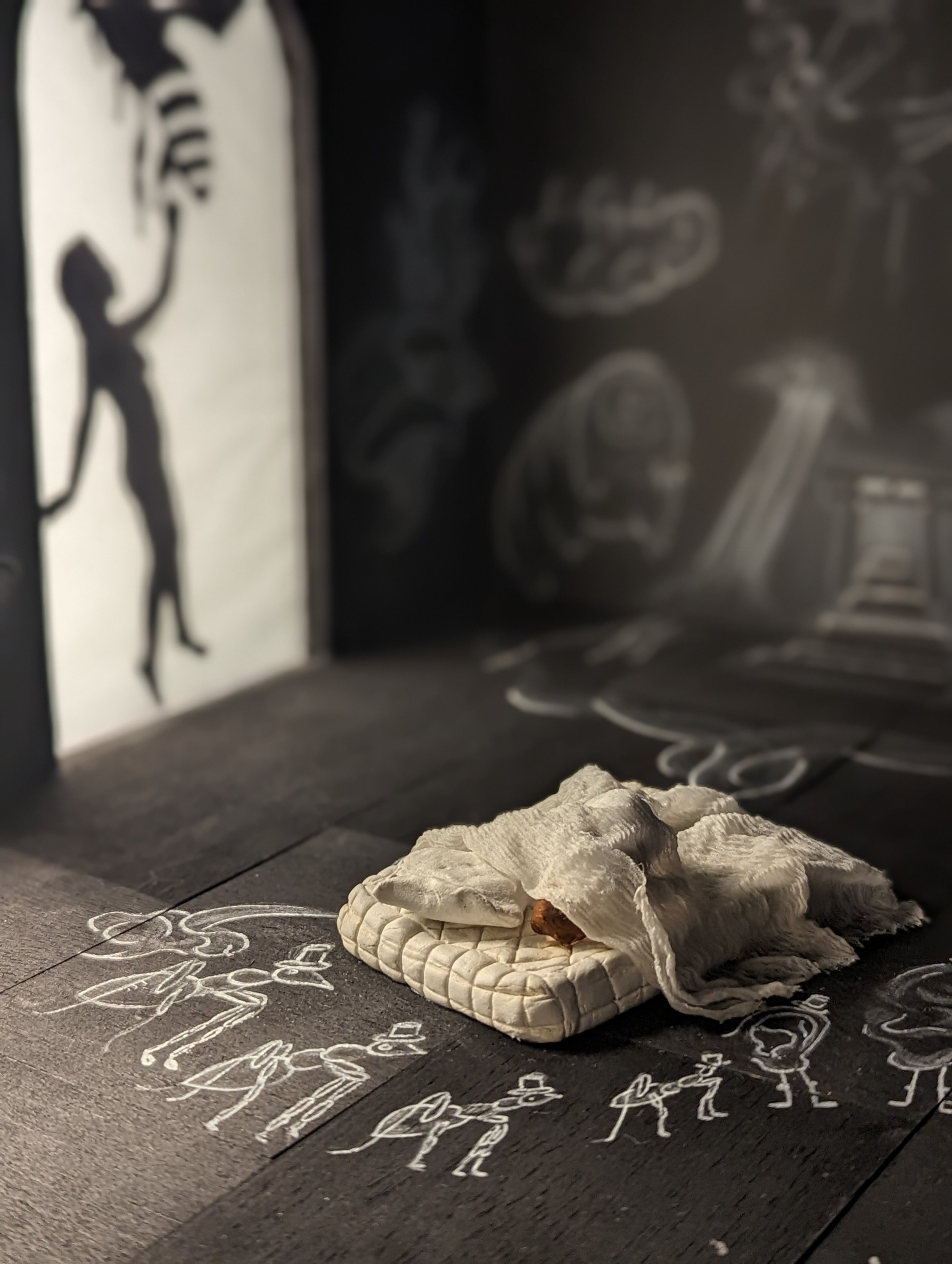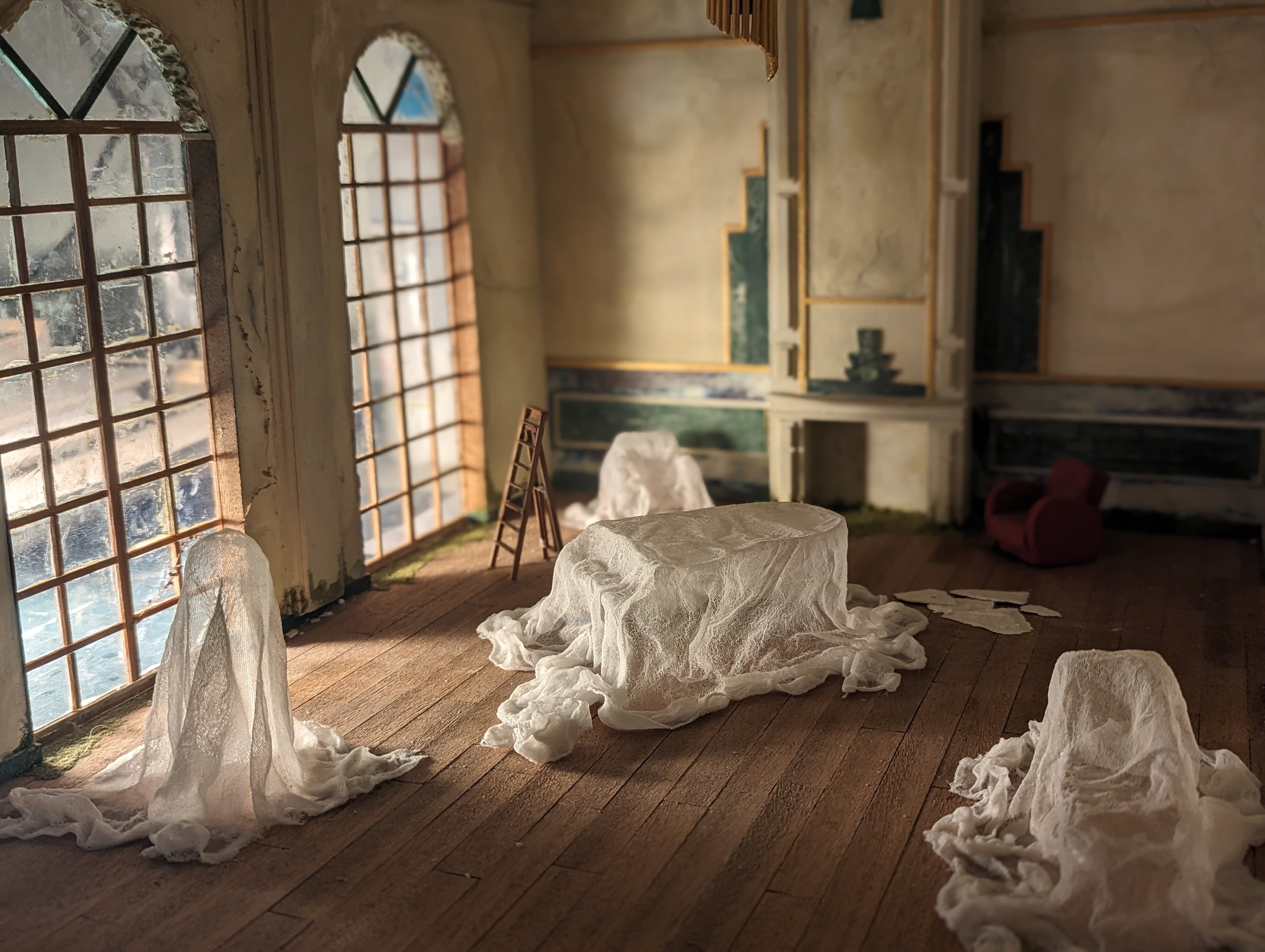ARTIST INTERVIEW: Anna Tong
Anna Tong
Tell me about yourself. Why did you decide to restart your art?
I’m a visual artist, based in London. I started my latest series called ‘Dwelling’ at the beginning of the pandemic, when we were all in Lockdown. It was always a childhood dream of mine to become an artist, but life seemed to keep getting in the way. Then, during the most unexpected time (the pandemic) I started to create again, partly as a way to mentally escape the situation we were all in. Somehow crisis became catalyst. As our worlds shrank and our homes took on new meaning, I created a series of miniature sculptures of imagined apartments. Diving into other people’s stories enabled my mind to travel during a time in which we weren’t allowed to leave. One thing led to another and the series, Dwelling, was born.
How has your father been influential to your work?
My father is an academic (a statistician) and ever since I can remember, I was immersed in his peculiar world of academia, a world that is inquisitive, one in which his colleagues were relentlessly pursuing their next discovery. It takes dogged determination to try something new, especially if no one believes you at the time. I think this sense of curiosity that both my parents have - they are both teachers - rubbed off on my brother and me. On a side note, the world of mathematics is surreal. People may think that artists are eccentric, but attending a conference with 5000 pure mathematicians feels as if you’ve landed on another planet!
My father’s career also meant that we were on the move a lot from an early age, travelling and living in new places. At times this felt disorientating. But it was also a privilege and one I’m extremely grateful for.
Growing up, we were encouraged to have a deep respect for science and it’s a field I explore in my work. My dream would be to partner/shadow crafts people, researchers, people from all walks of life, to immerse myself in their world and create art pieces inspired by their work/life.
When The Party Is Over
Why are you so fascinated by sculpture? What can you achieve through 3 dimensional form, that you can’t through 2 dimensional work?
Sculpture felt like the most appropriate medium for the Dwelling series. But I love two dimensional form as well and I work in both. There is something incredibly immersive about sculpture and installation art. I came to installation art through the route of theatre design, which I studied in my early 20s. To me, theatre design feels like one of the few disciplines that allows you to dream of an imaginary place and then realise it in literal form i.e. build it for others to walk inside, for actors to inhabit and for an audience to be transported to. An imagined world that becomes real.
I also believe that sculpture and installation art enable you to be completely present. Patsy Rodenburg, the celebrated voice coach, talks about “three circles of energy.” I’m sure my description does not do it justice, but my understanding is that these circles describe the different states that we sometimes find ourselves in. “First Circle” is when you are pulling energy inwards e.g. your voice goes very quiet and perhaps you feel somewhat invisible and self conscious. “Third Circle” is when you are pushing outwards and being loud - talking and not listening, taking up a lot of space. “Second Circle” is when you are in dialogue, both giving and taking, listening and speaking - when you are completely present. I believe that sculpture and installation art enable people to be in “Second Circle,” allowing us to be in the here and now, to stop the inner chatter in our heads, to be in dialogue with the piece, to be balanced. I personally find that very liberating. Installation art is a live event, it’s in the moment, it invites a response.
What are the common themes throughout your work and why are they important to you?
This is a hard question to answer because they’re still forming. But there are certain subjects that fascinate me:
Science/Psychology. I’m interested in perception vs reality. For example, memory is really intriguing. A memory often feels like a perfect recording but it warps and changes over time. In some ways, a memory doesn’t happen in the past, it happens in the present. When we recall that memory, different parts of our brain fire to relive that memory again, in the moment. I try to incorporate aspects of memory, distortion and nostalgia in my work.
Revealing the unseen. A piece I’m working on at the moment reveals the waves in the air around us that are invisible to the human eye. The intention is to highlight certain elements that are often unseen, influences that we don’t realise exist in our lives. I love using elements of science to comment on things that are human.
Displacement, disruption, identity, mental health. Displacement and identity are themes that reappear in my work. My great grandfather came to the UK in the 1910s. He worked on a ship during WW1, until it was bombed. He reinvented himself again and opened one of the first Chinese restaurants in the West End in London. I find the stories of immigrants fascinating; the need to reinvent yourself. They’ve often lived five lifetimes within one. I have so much respect for that.
Surreal: I believe that by distorting something - and making it more surreal in the process - we can reveal new truths. I like to play with surreal elements in my work.
I’m always mesmerised by photographs from the photographer, Richard Mosse. He surfaces elements that are usually invisible to the naked eye. He makes me see things with a fresh pair of eyes and jolts me into properly looking.
How is the concept of time projected through your work?
Time has always fascinated me. When we age, it feels as if time is slowing down (older people often overestimate how long it takes for one minute to go by). The colour of a room can also impact the way we perceive time.
I explore the subject of time in the Dwelling series. The occupant in the apartment called In Search Of Nonlinear Time, is an academic who studies time as his subject. He himself is detached from the outside world, having created a sanctuary for himself at home. He’s somewhat ‘out of time’, displaced. He’s thousands of miles from his homeland. His wife has passed away.
In Search of Nonlinear Time
The occupant in the apartment called In The Presence Of The Departed is deep in grief, traumatised by an unexpected and tragic event that happened a long time ago. She’s still living in the past, her belongings are from that time. It’s almost as if, at that moment, she stopped progressing and she can’t make new memories.
The Presence Of The Departed
Time is one of our most precious resources (that depletes each year for people) and we often, or at least I know I often, don’t even think about it. Instead, I find myself obsessing about certain things that are completely unnecessary.
Thinking about your most recent piece, how did the piece evolve from start to finish? What was your creative process?
Before the pandemic, one of my favourite things to do was to walk through streets at night and peer into brightly lit houses, imagining what their lives were like, unpicking the clues in their homes. That probably sounds quite nosey!
I started the Dwelling series during the pandemic. I created miniatures partly for practical reasons but also to act as a metaphorical representation of what we were going through.
The format (miniature apartments) enabled me to explore multiple stories and themes e.g. identity and displacement in one apartment, grief and trauma in another. I also wanted the format (of miniatures) to transport the viewer back to childhood, to a time when we could play with toys and imagine what our lives would be like.
The apartments are imagined i.e. I didn’t replicate apartments that exist in real life. I always start with the story - forming a rough idea in my mind about the occupant’s life. These stories are fictional but I do sometimes draw elements from various people I met. I’m drawn to people who are somewhat on the fringes, who have led rich lives, or who are conflicted about something. Once I have a story in my head, I start imagining how they’d live, how their story would play out in their home, in their furniture and the geography of the room. After this, I start building.
As you go further up the apartment block and into the clouds, the apartments become more surreal. I tend to have more fun with the apartments in the upper floors.
Which sculpture has been your favourite to work on, and why?
Somnum, because it was the most autobiographical piece out of all the apartments so far, and the least harrowing to create. Building it felt cathartic.
Somnum
Are there any artists in particular who you admire? Do they have an influence on your own work?
In the early ‘90s, as a teenager, I stumbled across a book about Frida Kahlo in a bookshop. I spent hours leafing through the pages of her life, completely transfixed. In the early 2000s, I visited the house in which she was born and died (in Mexico City). I find her work incredibly raw. She cuts straight to emotion. Over the years, new generations discover her, and she gets redefined again and again. Her work feels timeless.
I’m not as brave as Frida, but she inspires me to be a bit braver with each piece and to take more risks. To be honest, in many ways showing my work makes me feel quite exposed. Through art, I’m expressing elements that I previously never shared. I guess, through this process, there is a part of me that is aiming for self-acceptance.
Cornelia Parker is a big influence. She always has a new take on a subject. I love the way she plays with light, and the history she imbues in objects. Her installations are so powerful. She comes alongside people from all walks of life (prisoners, craftspeople, children), explores their world and creates artwork based on these experiences. I’d find it amazing to work that way.
Greyson Perry has an amazing anthropological approach. Every time I see his work, it feels true, it feels honest. He seems to get to the core of a complicated subject and shares his views without letting go of its complexity. His response is nuanced, and never a convenient soundbite. I try my best to follow this approach of getting to the core of something. I love ‘slow art’ i.e. art that rewards the viewer by slowing down, Art that is multi-faceted, where the more you look, the more you find.
Why do you think art is important in society?
I think people have always had a burning desire to process and express their experiences, understand the world, communicate with one another, imagine and question, explore and document. This is built into our DNA. I believe that Art is a function/a result of all those needs. Ever since we started documenting our lives in cave paintings, there has been Art.
There is an incredible cave painting at Injalak in Australia where images have been painted on top of one another, over the decades, a document of people’s lives, a layering effect happening over the generations. Art as artefact.
I’ve never understood why, at some universities, you’ll often find History of Art, but not Art itself. I’ve heard people put forward the argument that Art is for pleasure and isn’t necessary to our survival. I believe Art is as important and as fundamental as, for example, Mathematics or Medicine. Our ability to immerse ourselves in another person’s world and be moved by it, the ability to empathise is what distinguishes us - for now - from machines.
I also believe that amazing things can happen when two fields collide e.g. a collaboration between a physicist and an artist - what could they create and learn from one another? It would be amazing if the same piece could appear in the Science museum but also feel right at home in an art gallery.





